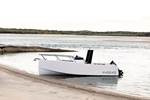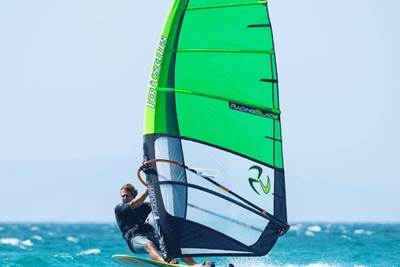FLOKI 6.5 mini racing yacht integrates bio-based Sicomin GreenPoxy resins
Staying true to the roots of its racing class, FLOKI 6.5 is built entirely from bio-based/recyclable raw materials without compromising on performance or processability.
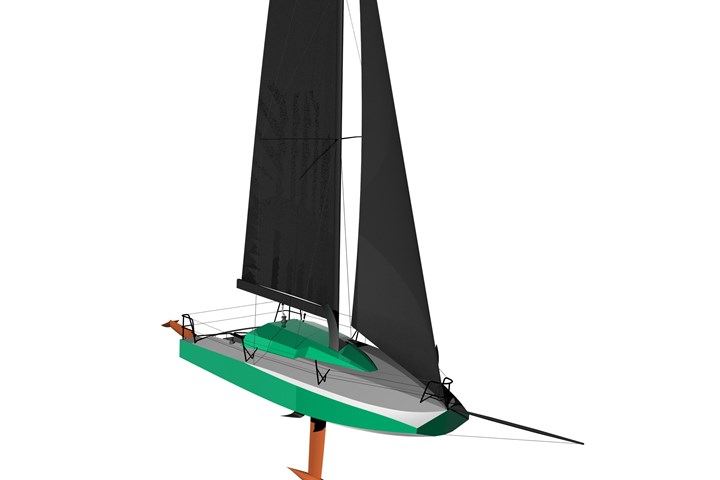
All photo credit: Sicomin
On March 16, Sicomin (Châteauneuf les Martigues, France) confirmed the use of its GreenPoxy resins in the build of the sustainable Mini 6.5 class yacht, the FLOKI 6.5. Designed by Antoine Mainfray of (France), a leading naval architect and bio-composite specialist who has built structures for what are said to be the world’s fastest racing yachts in the IMOCA, VOR and ULTIM classes, the 6.5-meter FLOKI showcases the latest in biocomposite materials and a cost-effective flat panel build process.
Mini 6.5 class yachts were first proposed by U.K. sailor Bob Salmon in the late 1970s as a new class of small, simple and cheap-to-build, singlehanded racing yachts that would counter the rising costs involved in the sport at the time. Sicomin notes that even today, the biennial Mini-Transat 6.5 race, from France to the Caribbean, remains one of the most competitive ocean races and a hot bed for new design innovations and experimental composite constructions.
Staying true to the roots of the class, Antoine’s initial design concept for the FLOKI 6.5 was to focus on simplifying both the design and the build process itself, using premade infused panels shaped over frames or in a jig rather than a more expensive female mold. He was also determined that the FLOKI 6.5 should be built entirely from bio-based or recyclable raw materials.
After successful processing trials, excellent mechanicals, DNV GL-type approval (Oslo, Norway) and the support of the Sicomin technical team, the boat’s resin systems were determined. InfuGreen 810 resin was selected for the flat table infusion of the hull, deck, roof and structural panels, with Sicomin’s GreenPoxy 33 resin — which is fully compatible with a range of traditional composite fibers, fabrics and bio-based reinforcements — selected for secondary lamination of the assembled parts; both resins can be used with different hardener speeds depending on the component size and curing time required.
Bamboo textile specialist (Carbonne, France) was selected to supply its 350gm 2 x 2 twill weave bamboo fabric for the hull, deck and roof panels, offering a negative carbon footprint. The bamboo strips act as tiny sandwich structures that absorb very little resin, enabling high reinforcement ratios in the finished laminate. With a density only half that of carbon fiber and optimized sound and vibration damping qualities, the bamboo reinforcements are said to produce a highly functional and ecological biocomposite structure. With the bamboo twill forming the primary laminates for the FLOKI 6.5, a 300gsm stitched +/-45Ëš flax fiber fabric was also used for the secondary bonding and taping in the structure.
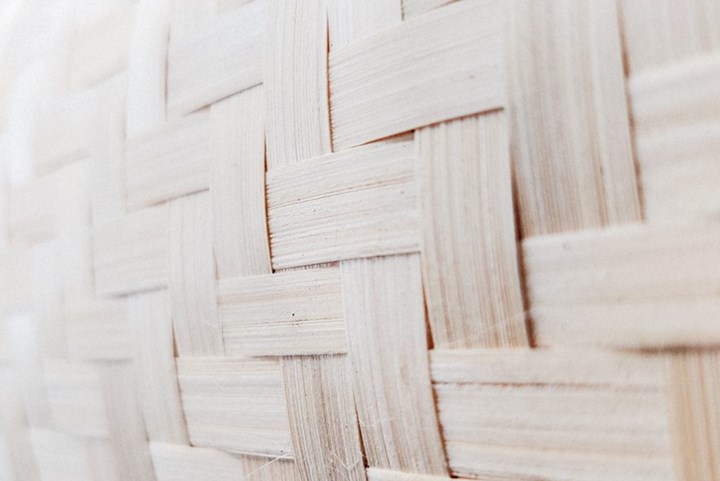
Bamboo fabric used for the FLOKI 6.5 yacht design.
Maximizing the inclusion of sustainable materials onboard, sandwich panel sections of the FLOKI 6.5 use Airex AG’s (Sins, Switzerland) latest T92 PET foam formulation, said to be the first to be manufactured from post-consumer recycled PET drinks bottles. The T92 core for the project, which also features Airex’s SealX surface treatment that halves the resin uptake of the core material, was also delivered by Sicomin as part of the company’s range of complimentary products.
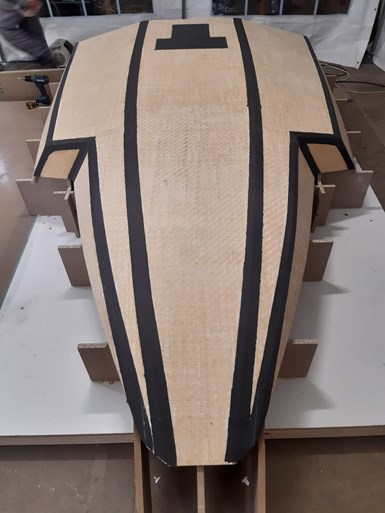
Sicomin says that because the FLOKI 6.5 was being built with a hull jig rather than a traditional plug or mold, its development could begin immediately. After the first bamboo fiber and Infugreen 810 panels were infused, hull panels were cut using CNC cut templates; dry fitting and setting up of the panel structure on the jig were implemented; the hull planks were formed on the jig and bonded in place; a secondary lamination between the hull panels was applied; the hull was lifted and flighted for a secondary lamination on the inner hull skin (planks and bulkheads, local reinforcements); the deck and cockpit panels were fitted directly to the composite structure; and the roof was bonded (the roof is made on its own jig using the same process as the hull).
Smaller components such as the yacht’s rudders were built in their own molds using a mix of bamboo and carbon fibers, along with GreenPoxy 33 resin.
Looking toward the future
Sicomin reports that the FLOKI 6.5 build is well underway at Antoine’s workshop near La Rochelle, France, with the launch and sea trials planned for April-May 2021, ready for the start of the Mini 6.5 racing season.
“We have built quite some expertise with naturals fibers and Sicomin’s bio-resins during our previous projects,” adds Antoine. “For the FLOKI 6.5 it was really important to us to have materials that didn’t compromise in terms of performance and processability, as well as being green. The GreenPoxy range delivers that performance and is so easy to work with.”
Related Content
Welding is not bonding
Discussion of the issues in our understanding of thermoplastic composite welded structures and certification of the latest materials and welding technologies for future airframes.
Read MorePlant tour: Airbus, Illescas, Spain
Airbus’ Illescas facility, featuring highly automated composites processes for the A350 lower wing cover and one-piece Section 19 fuselage barrels, works toward production ramp-ups and next-generation aircraft.
Read MoreThe potential for thermoplastic composite nacelles
Collins Aerospace draws on global team, decades of experience to demonstrate large, curved AFP and welded structures for the next generation of aircraft.
Read MorePlant tour: Collins Aerospace, Riverside, Calif., U.S. and Almere, Netherlands
Composite Tier 1’s long history, acquisition of stamped parts pioneer Dutch Thermoplastic Components, advances roadmap for growth in thermoplastic composite parts.
Read MoreRead Next
ATL Composite panel systems enable Noosa 7 dynamic dayboat design
The Noosa 7 is hand-built and customized using DuraKore and DuFlex composite panel systems, minimizing material waste, tooling costs and simplifying quotations.
Read MoreCarbon fiber windsurf fin incorporates Sicomin bio-based epoxy resin
Sicomin GreenPoxy 33 meets high-performance windsurfing fins requirements, accommodating significant loads, high torsion stiffness and flexibility.
Read MoreCeramic matrix composites: Faster, cheaper, higher temperature
New players proliferate, increasing CMC materials and manufacturing capacity, novel processes and automation to meet demand for higher part volumes and performance.
Read More
